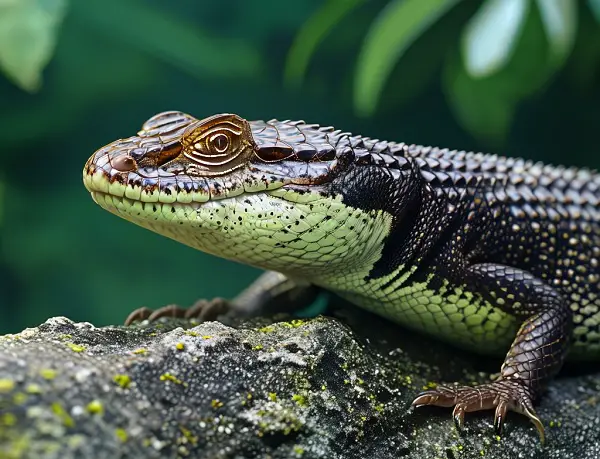13 Beautiful Birds With Yellow Bellies (ID Guide With Photos)
What draws us to birds with bright yellow bellies? Is it their stunning looks, their happy songs, or how they brighten our world? This guide will show you 13 beautiful yellow-bellied birds in North America. You’ll meet the American Goldfinch and the unique Prothonotary Warbler.
These birds have everything from golden feathers to a black “necklace” on the Canada Warbler. They are a joy to see. This guide is for anyone who loves birds or just enjoys seeing them in their garden. It will teach you about the amazing variety of yellow-bellied birds in our area.
So, why are these birds with yellow bellies so special? Where can you find them? Let’s explore our ID guide to learn more about these colorful birds.
Birds With Yellow Bellies
In the world of birds, yellow is a standout color. It brightens the feathers of many species, from the sunny American Goldfinch to the subtle Yellow Warbler. These yellow birds add joy and color to their homes, catching the eyes of bird lovers and nature fans.
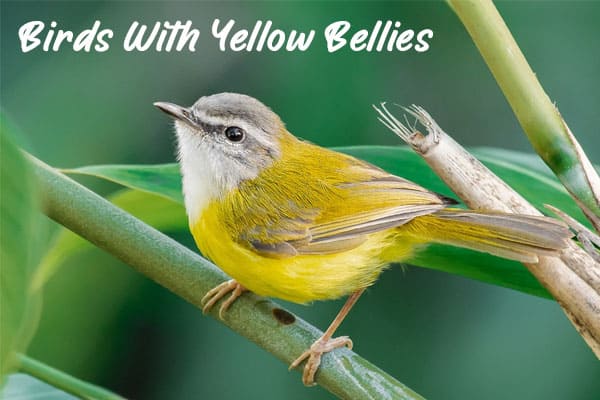
Yellow: The Color of Joy and Sunshine
Yellow has many roles for birds. It helps males attract mates and females hide in summer leaves. Birds with yellow feathers bring a pop of color to forests, grasslands, and more.
The Scarlet Tanager and Common Yellowthroat show the variety of yellow bird species. Each one is a masterpiece of nature, making us stop and see the beauty around us.
| Bird Species | Description |
|---|---|
| American Goldfinch | One of the most common yellow birds, easily identifiable by its bright yellow color with black wings, tail, and cap. |
| Scarlet Tanager | While primarily red in color, the Scarlet Tanager has dull yellow females and non-breeding males with a similar shade to the females, but they have black wings instead of olive. |
| Common Yellowthroat | Known for their dazzling yellow neck and breast with an olive backside, characterized by a thin, pointed bill and a distinctive black mask on males. |
Exploring birds with yellow feathers shows us nature’s beauty. These yellow birds are a joy to watch and crucial to our ecosystems. They help pollinate, spread seeds, and show us the health of our environment.
Studying birds with yellow bellies helps us appreciate our feathered friends more. We can enjoy birdwatching at home or help protect their homes. This way, we can keep these vibrant bird colors around for the future.
Prothonotary Warbler
Get ready to be amazed by the stunning Prothonotary Warbler, a true golden gem in the bird world. Known as the “Golden Swamp Warbler,” this bird is a sight to see as it moves through its home in lush, moist areas. The male Prothonotary Warbler shines with its bright yellow head and belly.
The females have a calmer look with olive-green feathers. Both males and females have a unique shape and big, dark beak. These birds live in the southeastern United States during the breeding season and head to Central America for winter. This makes them a delight for birdwatchers everywhere.
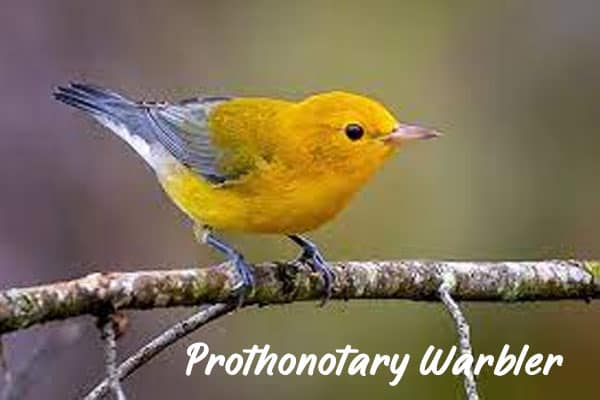
The Prothonotary Warbler is endangered in Canada, found in southern Ontario with a small number of pairs. In contrast, it was taken off the endangered list in California in 1989. By 1997, there were over 160 records of these birds in the state.
In the Pacific Northwest, the Prothonotary Warbler is a rare sight. It has been spotted in British Columbia, Oregon, and Washington. The first sighting in British Columbia was in November 2001. Since then, there have been eight more sightings, mostly during the fall migration.
The Prothonotary Warbler’s song is a clear, ringing tune that repeats. Their call sounds like a dry, loud “chip.” These birds love swampy areas in central North Carolina. Males arrive before females, with females joining a couple of weeks later.
Prothonotary Warblers build nests in cavities. Males look for the best spots and make several nests for the females to pick from. They live in moist places like swamps, bogs, and marshes. In the spring, they come to North Carolina in mid-April and raise their young in tree holes. Then, they migrate to Central and northern South America in early September.
Western Tanager
The Western Tanager is a standout among the vibrant yellow-bellied birds in our skies. Known as Piranga ludoviciana, it wows with its mix of brilliant yellow, black, and red. This bird is a favorite among birdwatchers in the western United States and Canada.
Identifying Western Tanagers
Spotting a Western Tanager is easy thanks to its unique look. The adult male shines with a bright yellow body, black wings, and a fiery red head. Females and young birds have a calmer look, but still show off the Tanager’s signature colors.
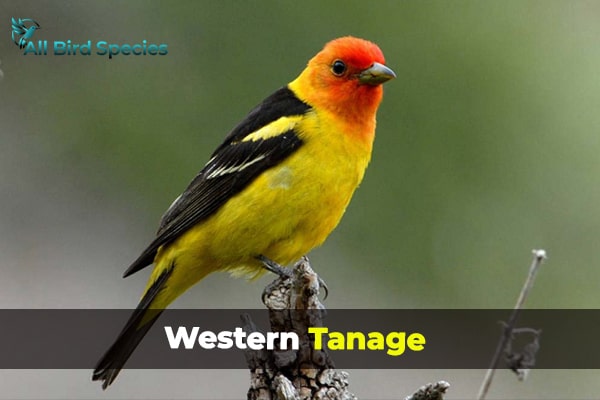
These birds stand out with their big, strong beaks and round shapes. You’ll find them in forests, where their bright colors and lively actions are a treat to see.
- Adult male Western Tanagers have black wings, a flaming orange-red head, and two wing bars: one yellow and one white.
- Adult females have subdued yellow-green plumage and red restricted to the front of the face.
- Immature males have a scalloped back, and their head color varies from yellow to patchy red.
- Western Tanagers forage for insects slowly and methodically along branches and leaves.
These birds move through different habitats during migration, but they love to breed in coniferous forests. They go from low juniper-pine mixtures to spruce-fir near the treeline. In winter, they hang out in pine-oak woodland and forest edges in Middle America.
“Western Tanagers are larger and heavier-bodied than warblers, with a distinctive combination of bold colors that make them a true delight to spot in the wild.”
Western Tanagers are a real treat for birdwatchers and nature lovers. Whether you’re in the forest or at home, keep an eye out for this colorful bird. It’s sure to brighten your day.
Canada Warbler
The Canada warbler (Cardellina canadensis) is a stunning songbird that captures the hearts of bird lovers in North America. Its bright yellow belly and unique black “necklace” make the male a sight to see. Females and young ones look different but are just as beautiful. They are truly a “jewel of the north” for those who see them in spring and summer.
These warblers are full of energy as they search for bugs in the forest undergrowth. Their beautiful songs make them a favorite among birders. They live in the forests of Canada and the northeastern U.S., from Manitoba to the Maritimes, and as far south as West Virginia.
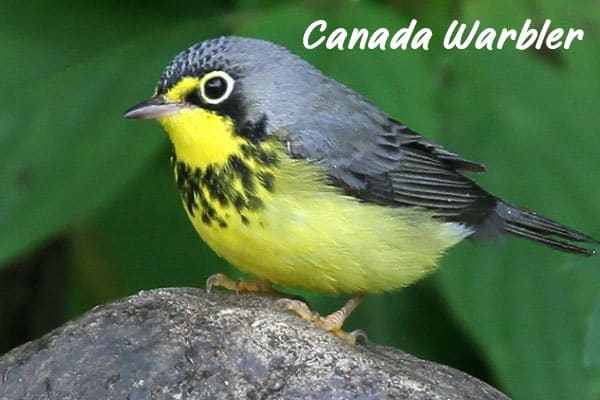
It’s easy to spot the Canada warbler because of its bright colors. The male’s black “necklace” is a clear sign. Females and young ones have a less bright belly and patterns that are not as clear. You need to watch closely because these small birds can be hard to see as they move quickly through the bushes.
To see the Canada warbler, look during spring and summer when they migrate and breed. They come to their northern homes in May and leave in late summer for South America. Watching the forests and woods during these months might let you see this beautiful bird.
“The Canada warbler is a true jewel of the north, with its striking plumage and melodic song capturing the hearts of birdwatchers everywhere.”
| Characteristic | Description |
|---|---|
| Size | Small, around 5-5.5 inches (12.7-14 cm) in length |
| Appearance |
|
| Habitat |
|
| Behavior |
|
Backyard Bird Watching
Watching birds in your backyard is a fun hobby. It lets you see colorful birds with yellow bellies from home. To attract these birds, put up bird feeders for species like the American Goldfinch. They like smaller perches and eat nyjer or sunflower seeds.
The American Goldfinch loves both wild and human spaces. They visit backyard feeders often. Planting native plants can also bring in different yellow-bellied birds. The Yellow Warbler, for example, lives in many U.S. states and goes to Central and South America in winter. A bird-friendly backyard lets you see these birds up close.
Attracting Yellow-Bellied Birds
Here are tips to attract yellow-bellied birds:
- Use bird feeders for smaller birds like the American Goldfinch. Fill them with nyjer or sunflower seeds.
- Plant native plants that offer food and shelter, like the Western Tanager’s summer home.
- Put in a birdbath or small water source for the birds.
- Don’t use pesticides and garden in a way that’s safe for birds.
With patience and the right setup, your backyard can be a place to see many colorful birds with yellow bellies.
“Observing the Yellow Warbler versus the American Goldfinch aids in bird identification. Male and female species often have different color variations, as seen in the Female Summer Tanager compared to the Male.”
| Bird Species | Habitat | Feeding Preferences |
|---|---|---|
| American Goldfinch | Found throughout the continental U.S. | Prefer smaller perches and nyjer or sunflower seeds |
| Yellow Warbler | Found through much of the U.S. (except the southernmost states), migrate to Central and South America for the winter | Attracted to native shrubs and trees |
| Western Tanager | Found generally west of the Rocky Mountains during the summer nesting season, migrate to Mexico for the winter | Drawn to bird-friendly gardens with native plants |
Wilson’s Warbler
As the seasons change, the Wilson’s Warbler, Cardellina pusilla, brightens our backyards and parks. This small, bright yellow bird is a joy to see during spring and fall migrations. Its black cap makes the males stand out from the females and young ones.
The Wilson’s Warbler loves to flit and search for insects in dense foliage. They live mainly in the western United States and Canada but travel far south to Panama each year. This makes them a colorful sign of the seasons in many places.
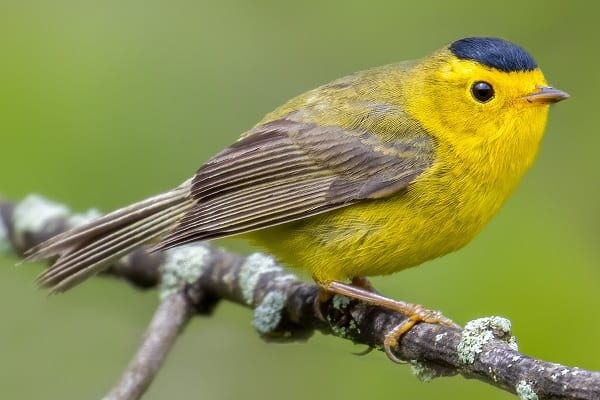
These birds are known for their bright yellow feathers and lively nature. They show the amazing diversity and strength of our migratory birds. They remind us of nature’s beauty that’s close to us.
- Preferred Habitat: Commonly found in thickets near water
- Seasonal Occurrence: Common in spring and fall, but uncommon in winter
- Physical Identification – Male: Easily identified by their black caps and yellow breasts in spring plumage
- Physical Identification – Female: Females do not have caps, but have olive-gray crowns
- Physical Identification – Eye Rings: Both sexes have yellow eye-rings
- Physical Identification – West Coast: On the U.S. west coast, Wilson’s Warblers can be bright yellow, almost orange
- Behavior – Foraging: Known for constant motion while foraging, wagging tail and flicking wings when perched
- Behavior – Mating: Males exhibit unique black cap resembling a toupee, yellow face, and olive cheek
- Behavior – Migrant Patterns: Common migrant in the fall in the Houston area
- Behavior – Feeding Habits: Small, pointed beak used to hunt for insects in low, dense thickets near water
The Wilson’s Warblers are a delight with their vibrant colors and lively nature. Keep an eye out and have your binoculars ready. You might spot one of these bright travelers in your area!
American Goldfinch
The American goldfinch (Spinus tristis) is a well-known and loved bird in North America. It’s famous for its bright golden feathers, black cap, and white wing bars. Males look stunning in the summer with their bright colors. Females and winter birds have a more muted look of olive and black.

These finches love to visit backyard bird feeders, especially for nyjer and sunflower seeds. They show off their skill by hanging upside down to get food. Their happy “per-chick-o-ree” song makes them a joy to watch in cities and suburbs.
The American goldfinch is a symbol of summer joy. With their bright yellow bellies and lively nature, they are a favorite among bird lovers. They are a key part of the finch family and loved by many.
| Goldfinch Species | Range | Distinguishing Features |
|---|---|---|
| American Goldfinch | Found throughout North America, may be the most abundant bird in the U.S. and Canada. | Bright yellow plumage in spring and summer, duller buffy color in winter; black cap. |
| Lesser Goldfinch | Western species, not found in the eastern U.S.; has a black back in the east and greenish back farther west. | Bright yellow with black cap for males, duller green-yellow for females. |
| Lawrence’s Goldfinch | Found only in the far western United States, has the most limited range among the three goldfinch species. | Unique east-west migration pattern, unlike the typical north-south migration of many other bird species. |
The American goldfinch gets its bright yellow color from carotenoids in the seeds it eats. These come from plants like thistles and sunflowers. Scientists study how these pigments affect the bird’s feathers.
In the U.S., American goldfinches can be seen in different areas all year or during certain seasons. They are often seen in backyards, especially where nyjer or thistle seed feeders are offered. This gives people a chance to enjoy these beautiful birds up close.
Read Our Previous Articles
| Do Penguins Have Teeth? |
| What is a Group of Turkeys Called? |
| White Birds with Long Beaks |
| Do Cardinals Mate for Life? |
| Spiritual Meaning Of Ducks |
Wrapping Up…
Birds with yellow bellies are a colorful and varied group. They offer birdwatchers many species to see and enjoy. From the well-known American Goldfinch to the unique Prothonotary Warbler, these birds live in different places across the U.S.
Learning how to spot yellow-bellied birds helps us understand and value nature more. These birds brighten our days and make birdwatching exciting. They bring joy and a sense of wonder to our lives.
By watching birds in our yards or in the wild, we can help protect these birds. We can also support efforts to save their homes. Sharing our love for yellow-bellied birds helps these amazing creatures.
Let’s celebrate the beauty of yellow-bellied birds. Let’s keep finding joy and inspiration in nature around us.



